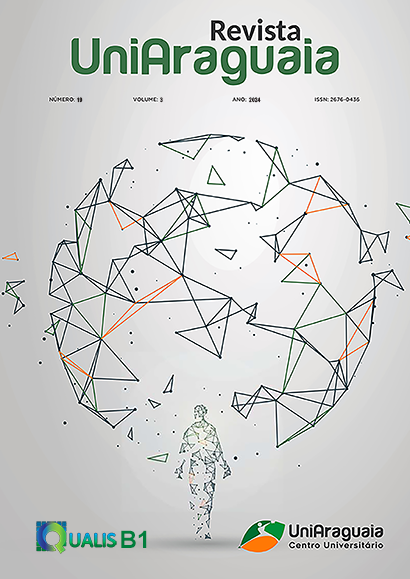EFFECTS OF RESISTANCE TRAINING ON THE INCREASE IN THE STRENGTH LEVEL OF IDODOS: AN INTEGRATIVE REVIEW OF THE LITERATURE
Abstract
Population aging is a worldwide, progressive, multifactorial phenomenon that causes many changes, the presence of chronic diseases attenuates this process, especially with regard to functional capacity related to the loss of muscle mass and strength that directly affect the ability to perform activities of daily living (ADL), which can lead to an increased incidence of falls, fractures, hospitalizations and deaths. In this context, the objective of this work is to carry out a bibliographic survey about resistance training in the elderly to increase the level of strength. Therefore, the study selection was used as a methodological strategy in the Virtual Health Library (VHL), ScientificElectronic Library Online (SciELO) and Public/Publicher Medline (PUBMED) databases. The searches were performed using a combination of descriptors: elderly, resistance training and strength level, considering only articles published in the last six years. After the search, a total of 262 scientific documents were found, but after applying the inclusion and exclusion criteria only 7 scientific articles that met the objectives of this study, 42.9% of these presented significant results in healthy elderly, 14.3% in elderly with sarcopenia, 14.3% in elderly with sarcopenic obesity 14.3% in elderly with Parkinson's disease. Therefore, the RT can represent a promising tool for the maintenance and/or improvement of the strength of the elderly, thus it is essential to encourage the elderly to regularly practice resistance training, with the aim of healthier aging and less morbidity and falls.
Downloads
Published
Issue
Section
License

This work is licensed under a Creative Commons Attribution 4.0 International License.
The copyright of the published articles will be transferred to the Uniaaraguaia Magazine, allowing its subsequent reproduction as transcription and with due citation of source. In the event of acceptance and before the publication of the article, the plaintiff (s) shall write a statement formally transferring copyright to the magazine.
The author may also print and distribute copies of his article, provided that he mentions that the rights belong to the Uniaaraguaia Magazine.
Author rights include the right to reproduce in full or partly by any means, distribute this article, including figures and photographs.
By submitting originals to the Uniaaraguaia magazine, the author or authors express agreement with the following terms:
a) Authors maintain copyright and grant Uniaraguaia magazine the right of first publication, with the work simultaneously licensed under the Creative Commons Attribution license that allows the sharing of work with recognition of the authorship and initial publication in this magazine.
b) Authors are authorized to assume additional contracts separately, for non-expiration distribution of the work version published in this magazine (eg publish in institutional repository or as book chapter), with recognition of authorship and initial publication in this journal.
c) Authors are allowed and are encouraged to publish and distribute their work online (eg in institutional repositories or on their personal page) to any point before or during the editorial process, as this can generate productive changes as well as increase the impact and citation of published work.

